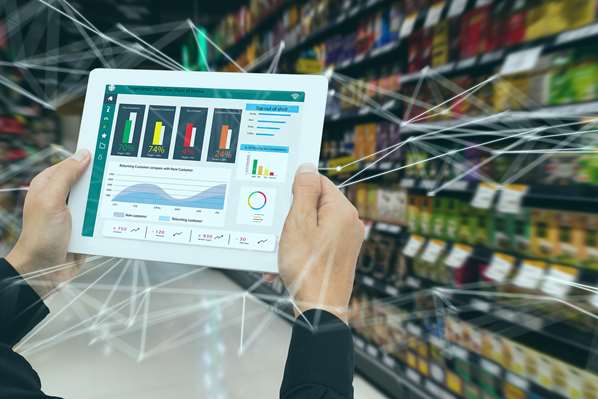
Planogramming, often referred to as POG, is a term often used to describe the merchandising plan for the layout of a retail store.
Retailers must be strategic with physical product placement in stores and on shelves. Products need to move to keep the store operating and making money. This means retailers have to get the most out of their space while also considering the needs of their customers.
A planogram is a schematic drawing or layout plan that is used by retailers to chart their merchandise displays. This is done so the layout will maximize sales. These diagrams or models can indicate the placement of retail products on shelves as well as the layout of the entire store. Planogramming helps keep stores running efficiently and maximizes their selling space. This is especially beneficial for smaller retail stores. Larger retail chains that want to create consistency throughout their store locations also benefit from these planned layouts.
Planogramming helps retailers track inventory, product success, and customer satisfaction. There are a few different strategies retailers use when it comes to planogramming.
Common Planogramming Strategies
One common strategy used by retailers is the market share strategy. This means that products are placed on the shelf based on their ability to generate revenue. The more money a product can make a business, the better location that product will obtain. This position is typically at eye level for the majority of consumers.
Another strategy is commercial status. These are product arrangements that depend on their brand. Products that come from high-profile, well-known brands can be put in prime locations. This is largely due to the level of influence a brand has through its name, image, and commercial and marketing utilization.
Block placement is another strategy used by retailers. This is a straightforward method of placing similar products together in a store. Customers tend to prefer this type of planogramming because it makes it easier to compare the price and qualities of similar products. This can make purchasing decisions faster and easier.
How Planogramming Affects the Brand Owner
As a brand owner, you want to sell your product. Understanding the role planogramming plays when your product goes to retail can help you secure better placement on the shelf. A major aspect of planogramming is the utilization of space. You’ll want to consider this when developing your packaging. You want packaging that is eye-catching as well as functional. This appeals to the consumer, as their eyes are drawn to the package. Design and color play a large role in product placement. This is why using the right materials and having a great, quality logo can make a huge difference in your overall sales.
The other important factor to consider is your packaging shape and size. Boxes and jars can be bulky and take up a lot of valuable shelf space. If your packaging is bulky or hard to work with, it likely won’t be placed in a prime location. You want to aim for convenient packaging that fits nicely into a smaller space. Making your product smaller can also allow for the retailer to put more on the shelf at a time.
Understanding Planogramming
Planogramming allows retailers to get the most out of their space. It involves the strategic placement of products to provide ease of accessibility to customers. The easier it is for a customer to find the product they want; the faster retailers can make money. As a brand owner, it is beneficial to understand the role that planogramming plays in the final placement of your product. You want your product to stand out from the competition so that it doesn’t get lost in the wide variety of options consumers have today. Your product packaging should be space-efficient while also capable of attracting the passing eye of the consumer. Contact the professionals at RIVIR to learn more about successful product development and placement.




